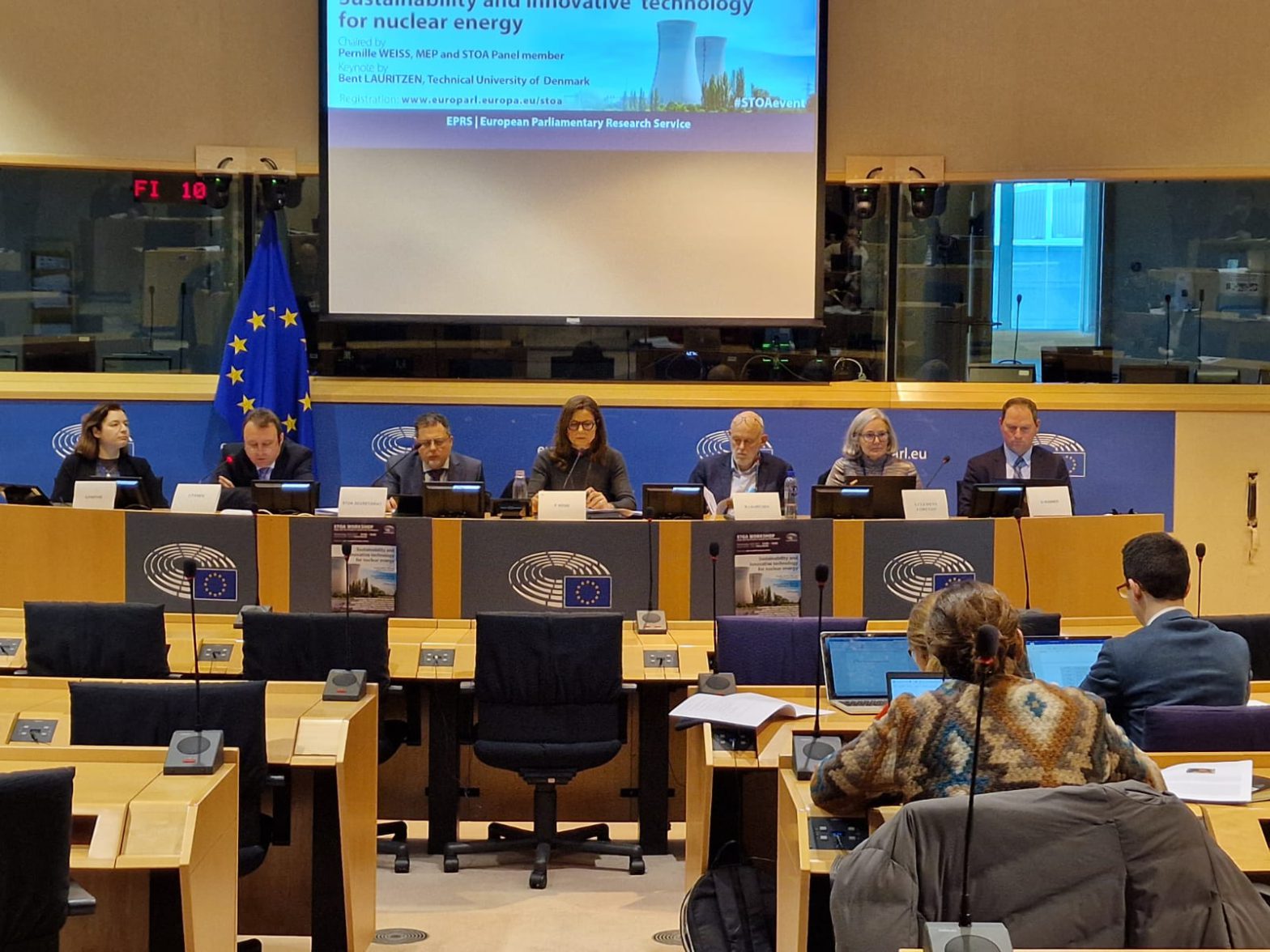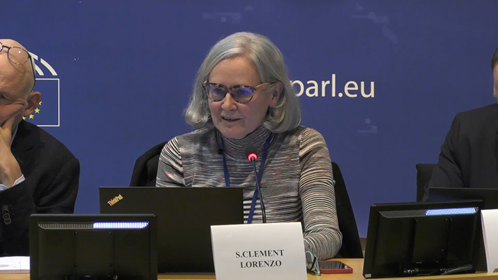How can nuclear energy help Europe achieve its green transition?

Speakers at the “Sustainability and innovative technology for nuclear energy”, organised by the European Parliament’s Panel of Science and Technology (STOA), February 2023. © EP
To meet our climate goals and achieve carbon neutrality by 2050, we need to include nuclear as part of the energy mix. This was the thrust of the opening statement offered by Pernilla Weiss, Member of the European Parliament, and organiser of the workshop entitled “Sustainability and innovative technology for nuclear energy”. The European Parliament’s Panel of Science and Technology (STOA) brought together a group of leading experts to debate the potential contribution of nuclear energy, its economic impact, and the importance of public perception, at a critical moment in time when Europe is trying to curb its greenhouse gases, ensure sufficient power supply and progressively become more autonomous. The invasion of Ukraine wrecked long-lasting deals with Russia, put on hold gas infrastructure that was meant to operate, and pushed our continent to look for alternatives.
Bent Lauritzen, from the Department of Physics of the Technical University of Denmark, delivered a keynote speech highlighting the merits of nuclear energy. Zero carbon emissions, scalability, security of supply and autonomy where some of the main benefits. However, strict regulation, lack of skills, public perception and increasing costs do not work to their favour. The EU Green taxonomy includes nuclear energy as one of the options to be considered with a set of financial instruments to encourage investment. However, out of the 51 nuclear fission power plants currently built, only 3 are based in Europe. Currently in the EU half of the member states rely on nuclear to generate electricity. Different nuclear approaches were presented, focussing on small modular reactors and others.
But according to Jan Pánek, Director for Nuclear energy, safety, and ITER, in the European Commission’s Directorate General for Energy, the picture is not static. There is an ongoing discussion about policy choices to be made. And there is also an investment and innovation challenge to be considered in terms of supply, conversion and enrichment services linked to fuel cycle. Russia represents 20% of Europe’s provision of these services, and currently countries in the west cannot perform these operations alone. This dependence should become an opportunity for R&D and innovation for Europe to come out stronger. In the interest of sustainability, we need to take carefully into consideration decommissioning and waste disposal. We can draw inspiration from Sweden, France, Finland where permanent geological disposals are starting to operate for high-level and intermediate waste.
Public perception, emotional intelligence, trust, and acceptance are fundamentally important in shaping the discourse and decision making. What light can they shed in this debate? Knut Ivar Karevold, Director of the Institute for Climate Psychology in Norway, and Associate Professor of the Sustainability Lab, at the University of Oslo, explained that in Norway, with time, there is more acceptance for nuclear, particularly among men. There is also a rift between politicians and the public, with the former being more negative and the latter more positive to nuclear. Our feelings and beliefs are very much influenced by vivid examples and experiences linked to accidents. This partly explains the public’s refusal to understand why new nuclear is safer. There are other factors that account for this, such as the ongoing battle between the flexibility of our brain and the rigidity of our beliefs, an plus the confirmation bias. Our perception of risk is very subjective, intuitive and is a reflection of our values.

While much the discussion focussed on fission, Susana Clement, Head of Broader Approach in F4E, took the floor to highlight the merits of fusion energy. The small quantity of fuel required to produce a reaction, the absence of any long-lasting nuclear waste, the inherently safe environment in the fusion device, and the lack of greenhouse gas emissions were praised. The technology of magnetic confinement, used in ITER, was explained along with the fabrication of components and the strict compliance standards they must meet. The commercial benefits were also addressed by sharing some of the technology transfers in medicine, robotics, mobility, or decommissioning. There is also a new generation of scientists trained in this school of nuclear, will be vital for the transmission of skills and the operation of such devices. Although, this energy is not here yet, the promise it carries together with the benefits are incalculable.
If you would like to watch the workshop click here.